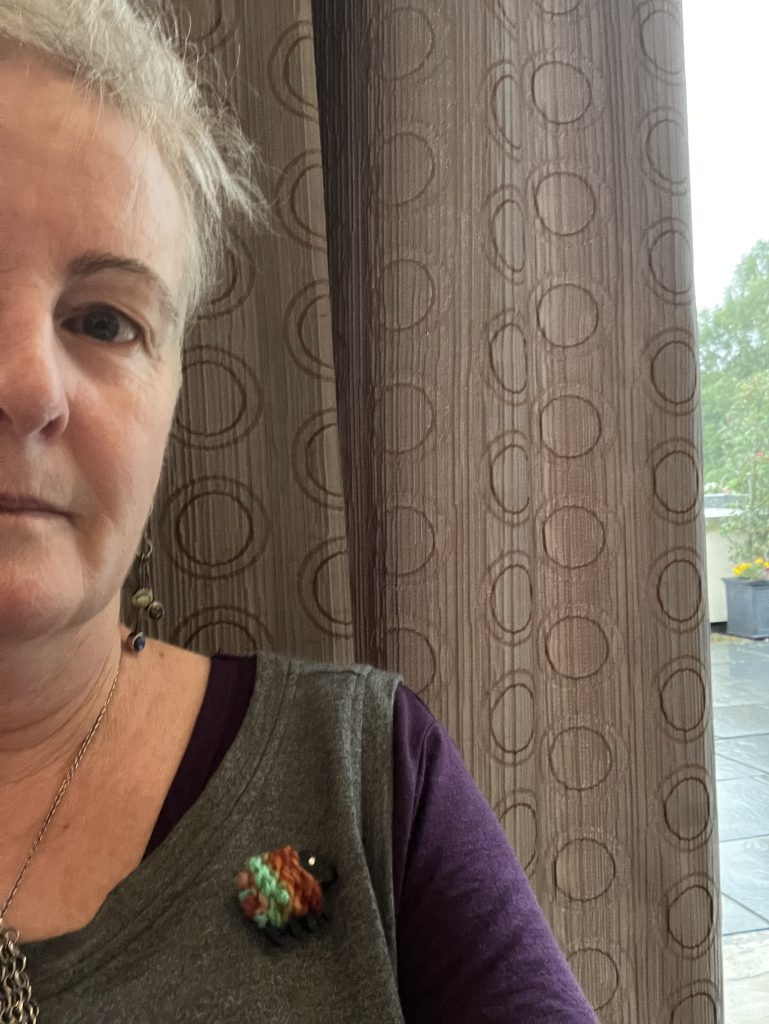
I started off this morning with a quick chat to Evan27, who was enjoying a birthday. We didn’t talk long, just a quick “Happy birthday baby!” and a catch up of all that’s going on.
The warm and fuzzy feeling was soon replaced by an “oh shit” moment when I realised that my warm Antarctica coat wasn’t in my room. I must have left it in the lobby of the hotel after James left. I threw everything into my bag and raced out to reception.
Fortunate Frogdancer struck a nice young man who pulled out my coat from under the counter. Phew! That’s the second time someone on this trip has saved me from leaving something behind. The first was my Antarctic water bottle in London, now this.
They say things like this come in threes. I’d better be careful…
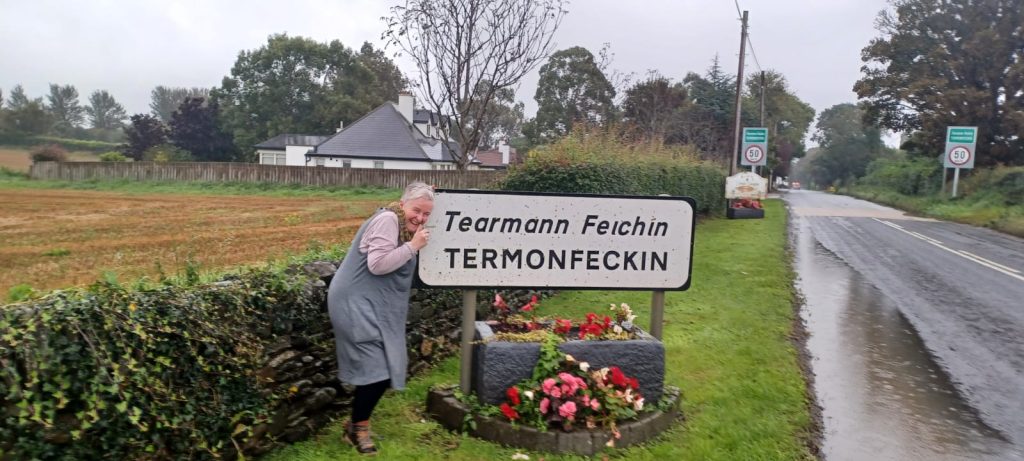
I forgot to put this photo up of me arriving in James’ town in the previous post about Drogheda. For some reason, I found the name of it a bit hilarious.
Our first stop for the day was a place called Trim Castle.
Along the way, we were regaled by such facts as there are more sheep than people in Ireland. They are bred mainly for their lambs, with France being the main customer.
Our guide comes from farming stock, so we heard many facts about fertiliser and such.
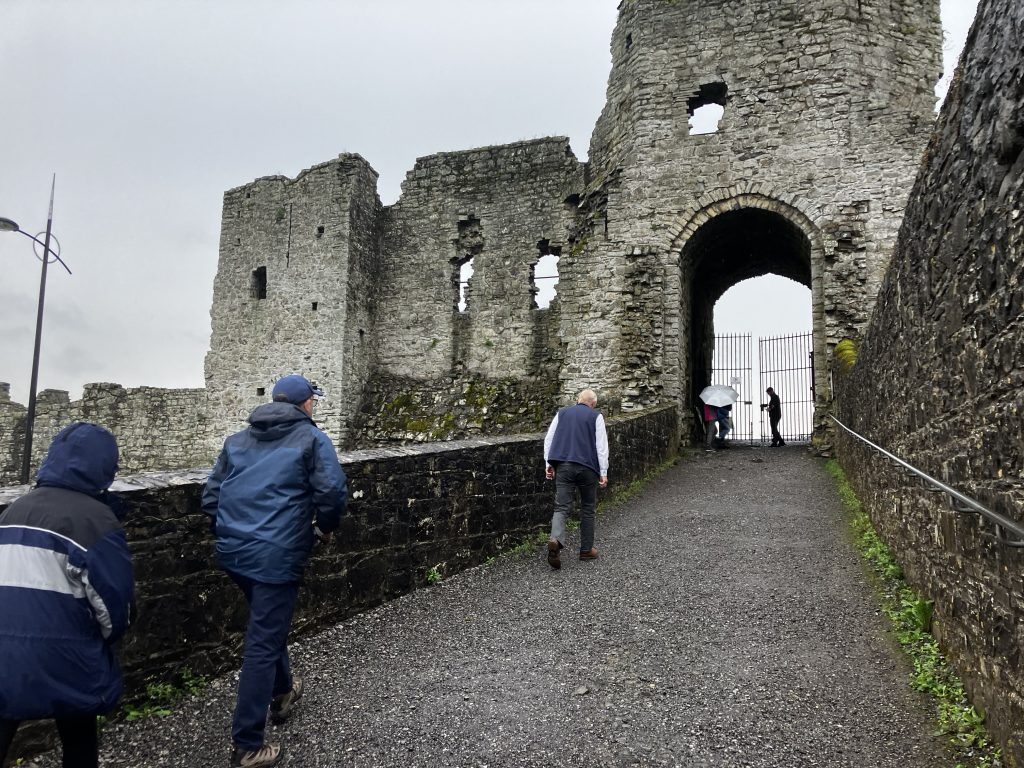
Here’s the gateway to the castle. No one is allowed to go in alone, you have to have a tour guide. Fortunately Brenda was very good.
One of the first things she told us was there was an oubliette beside the gateway. Basically, an oubliette is a very deep dungeon that you drop prisoners into, sometimes breaking their legs in the fall, then you forget about them and leave them to die.
It really brings the ‘evil’ into medieval, doesn’t it?
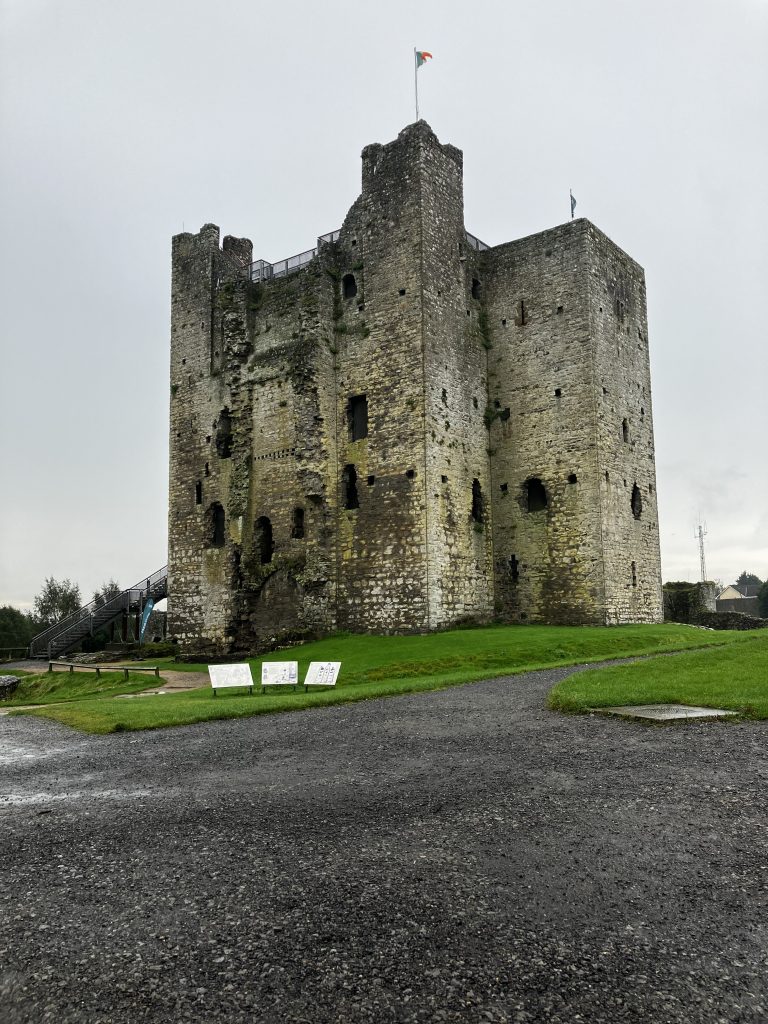
Look at this brooding piece of medieval history!
This is the castle Keep, which was constructed mainly for defence and general intimidation of the locals. It was started in 1176 by Hugh de Lacey under Henry II of England and was finished 30 years later by his son Walter.
Hugh didn’t live to see the completion of the project, having had an unfortunate “accident” after he tried to get the locals to tear down a working monastery to reuse the building stones. He was decapitated by a local stonemason who declared that Sir Hugh had simply tripped over his axe…
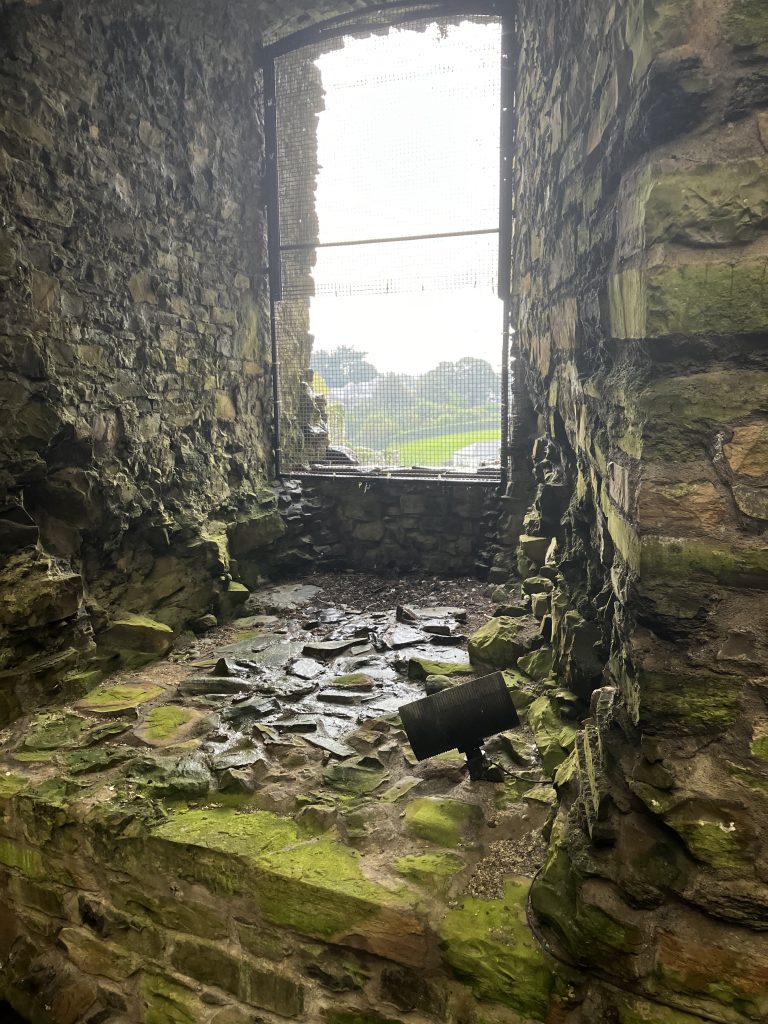
The walls were over 3 metres thick and were rendered and covered in whitewash both inside and out, so it looked very different to how it is today.
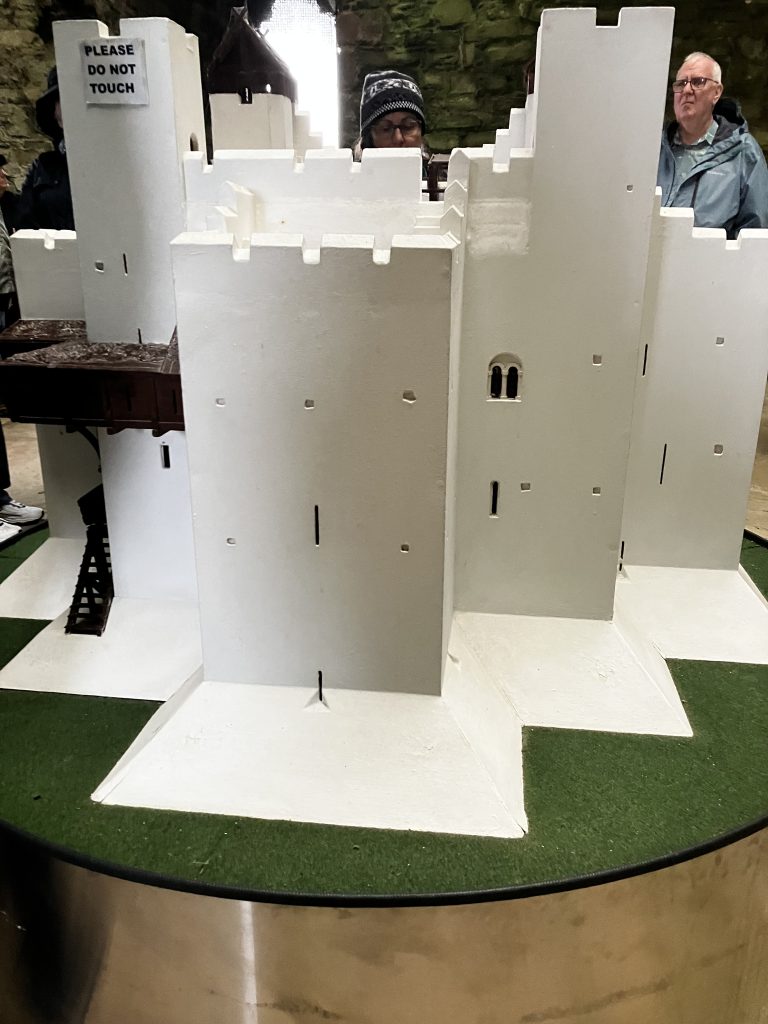
When it was first finished it looked like this, built as a cross shape with square towers. Unfortunately, Hugh soon realised that if you have square towers, you have blind spots.
The enemy sneaks up to the base of the tower in the spots where they know you can’t see them, they make a hole in the bottom, stuff a dead pig or something like that into it and set it alight. The pig burns, this loosens the mortar in between the stones and the tower is undermined.
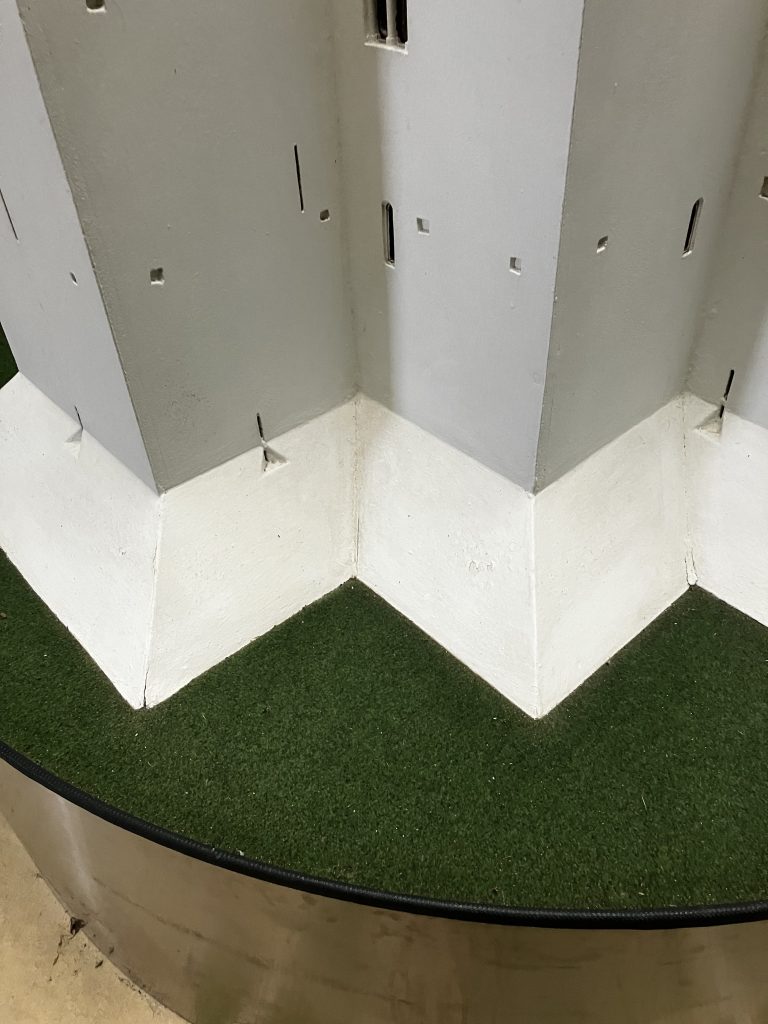
These slopey things called plinths were added to erase any blind spots and stop this from happening. I’d noticed them on castle walls before but never knew why they were there.
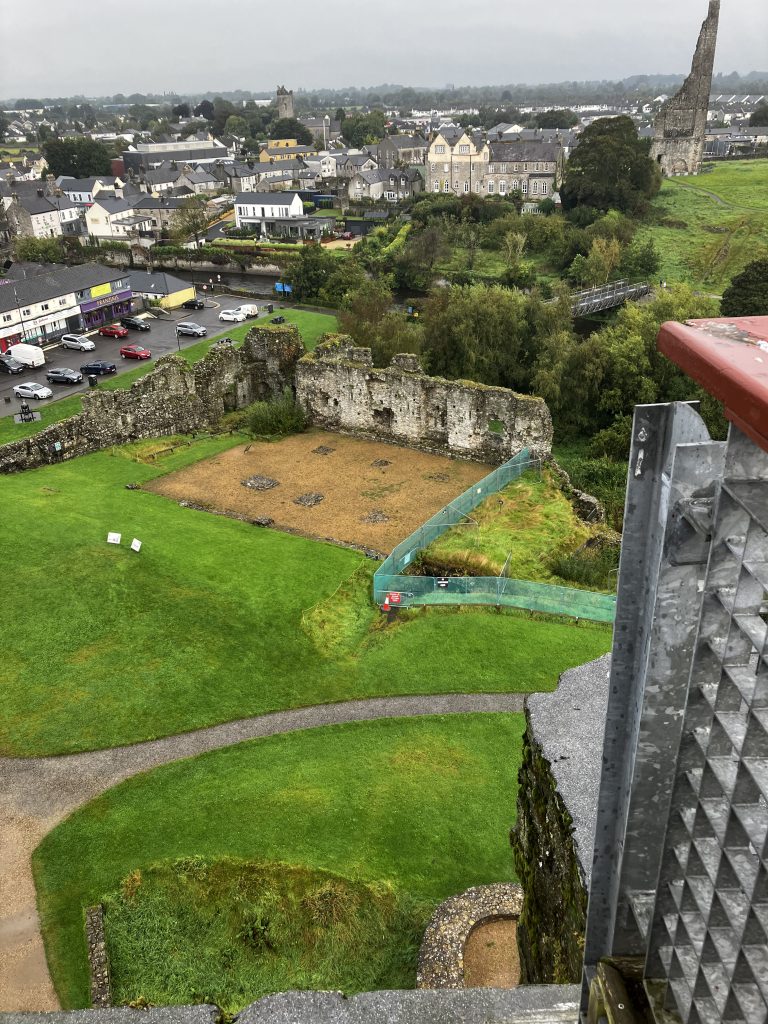
For all the work building the castle must have taken, it was abandoned by the de Lacey family as a residence in 1250. Hugh’s granddaughter Mathilda, who married a French nobleman with a name sounding suspiciously like mine, built a big house with lots of windows that was far more convenient to live in than a fortress.
The keep had never been attacked… the poor old Irish were in no position to attack an army with suits of armour and superior weapons. Also, the English came in under the guise of protecting the Church, so the Irish were scared to go against them for fear of eternal damnation.
The use of language was interesting. In the Keep the inhabitants were the noble family and the priest. They would’ve spoken French. In the grounds outside were the guardsmen and soldiers. They would’ve spoken a mix of Welsh and English. Outside the castle gates… Irish.
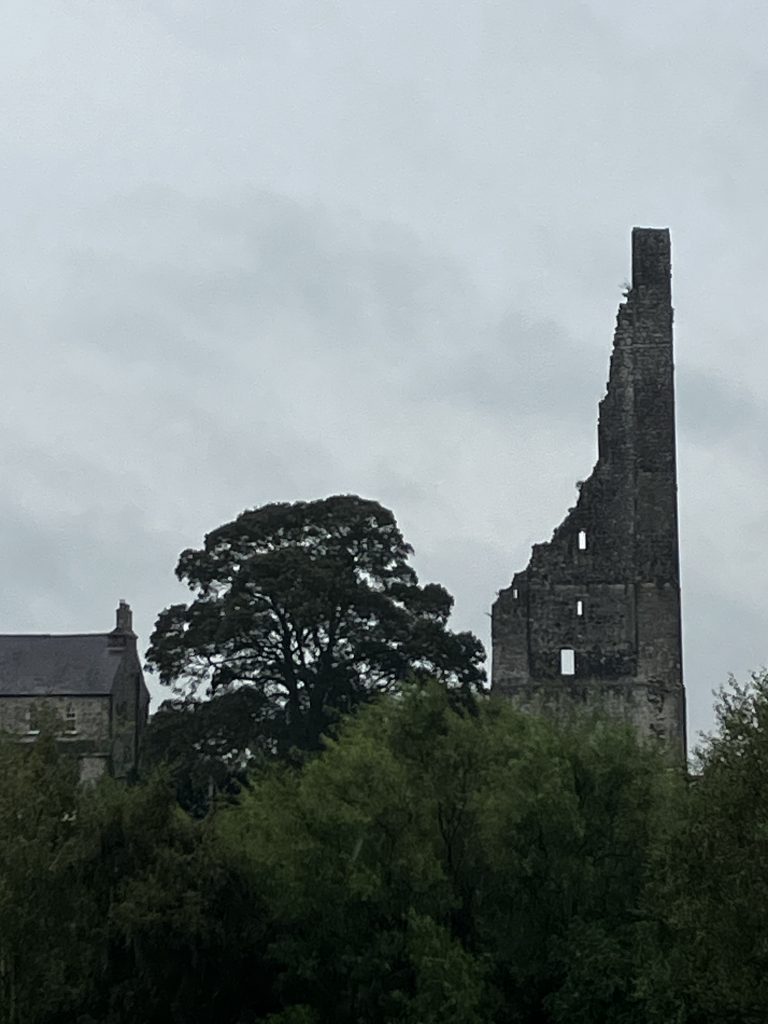
This beautiful tower that looks like it’s been gnawed is from an Augustan abbey that used to be there. The guide said, “When the abbeys were dissolved, the locals broke them up and used the stones to build their houses. Some call it looting, but the Irish call it recycling.”
The Duke of Wellington was born here – he who defeated Napoleon and inspired the excellent ABBA song ‘Waterloo.’
An interesting thing was that our guide was educated at the little Catholic convent school just over the river, where although the castle was right there, it was never mentioned.
“It was called King John’s castle, you know, he of the Magna Carta. But he was Prince John. He was never king in Ireland, no matter what he says.”
I like how the guides here are outspoken.
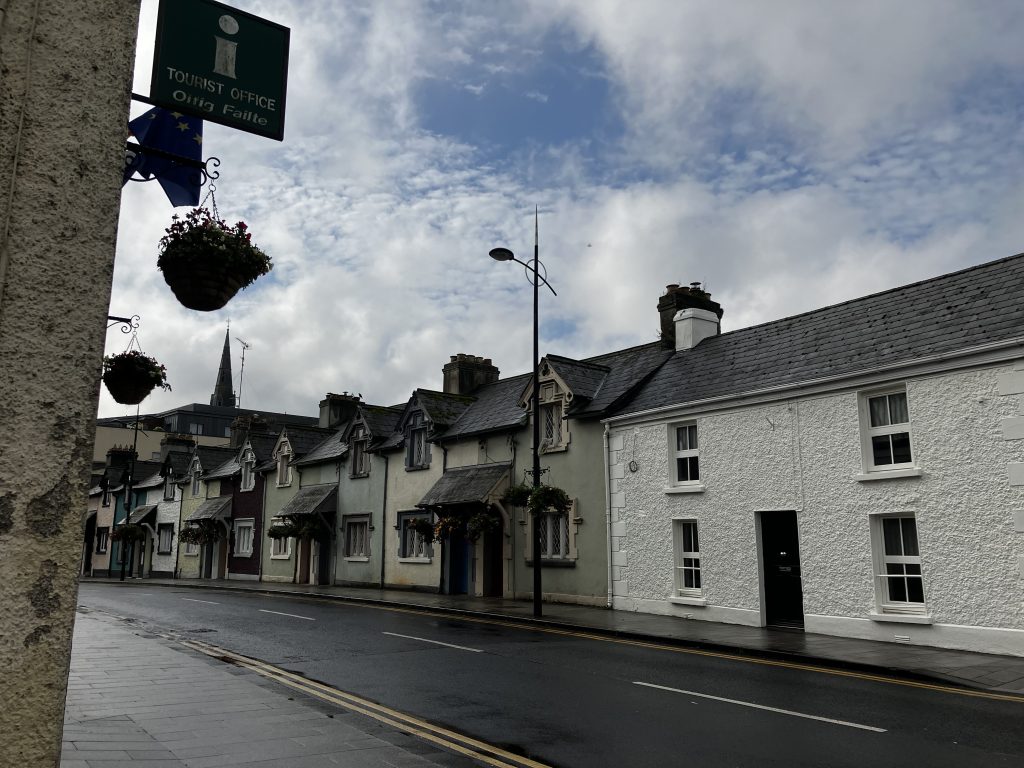
While I was standing outside the bus, chatting to the driver before we set off for Belfast, I took this photo of the pretty little street. I jumped in the bus, the driver started to pull away and I was searching frantically for my phone in all my pockets.
Suddenly a man was banging on the door of the bus, waving a bright red phone. Oh. My. God. I’d dropped it in the street.
The luckiest thing about it was that my debit card was in it. If I’d lost that, my holiday would have been absolutely ruined.
Just between you and me, I’m hoping that the ‘ Leave things behind’ streak is now finished.
Our guide is an interesting character. At first , with all the farming facts, I was a bit dubious. But then he dipped his toe into religion, saying religion has lost its grip in Ireland.
“We were under its thumb, the government was under thumb, police, every one. It was very stuffy. We came out from under it and we’re all the better for it.”
A while later we passed by Sloane Castle, which holds huge music concerts like The Rolling Stones, Madonna and the like. James had told me about it the day before, so I was keen to see it as we drove by.
It was Stunning.
“It looks great but it shouldn’t be there. If the English had left us alone we would have developed a different way. Ah well, we are what we are and we’re all speaking English.”
We drove past Francis Ledgewith’s house. Our guide knew I was taking notes so he asked me to take this down:
Francis ledgewith war poets WE1.
Sufla in Turkey to Flanders field he was killed moving a cannon
He was badly affected by the cold and he lost his bag of poems
***
I’ve never heard of him, but I’m leaving this here just as I wrote it, so I can look him up when I get home. Our guide raved about his poems.
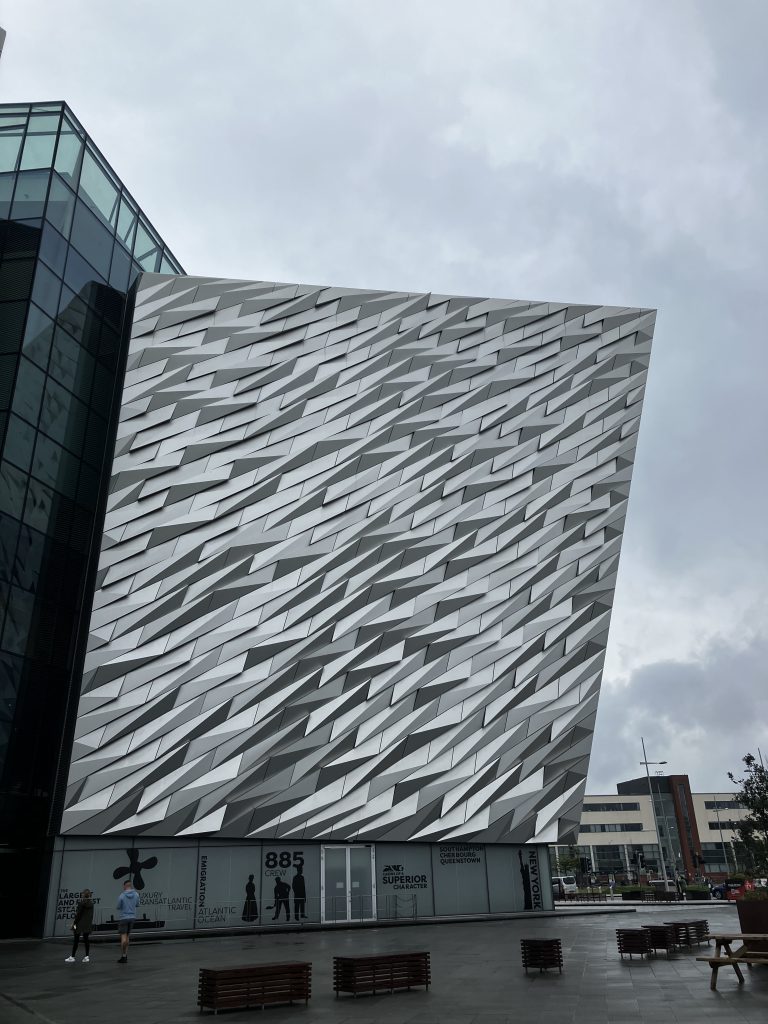
When we pulled up in front of the Titanic museum, we were told that the height of the jutting out things on the building were the same height as the Titanic’s hull.
“That’s great,” I thought. “ This is attention to detail. This is going to be good.
I was mistaken.
OMG I’ve rarely been so BORED.
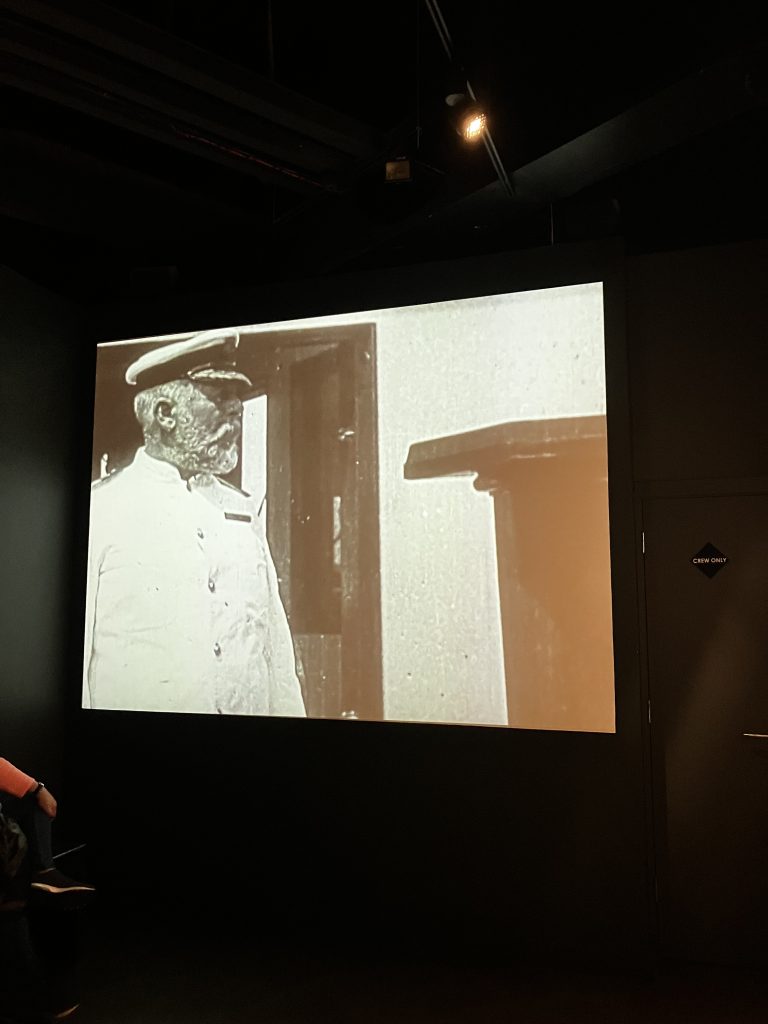
(This was the captain of the Titanic.)
Now, don’t get me wrong. I’m all about seeing Titanic stuff, icebergs and stuff. But the museum takes around 2 hours to get around, and only the last 20 minutes has direct Titanic-on-the-ocean relevance.
I don’t care about Flax coming into Belfast in the 1800’s. I don’t care how the ship was made. I don’t care that the Queen’s Island shipyard workers were known as ‘Islandmen’, for crying out loud.
Bloody hell, we’re here for two hours. Shoot me now…
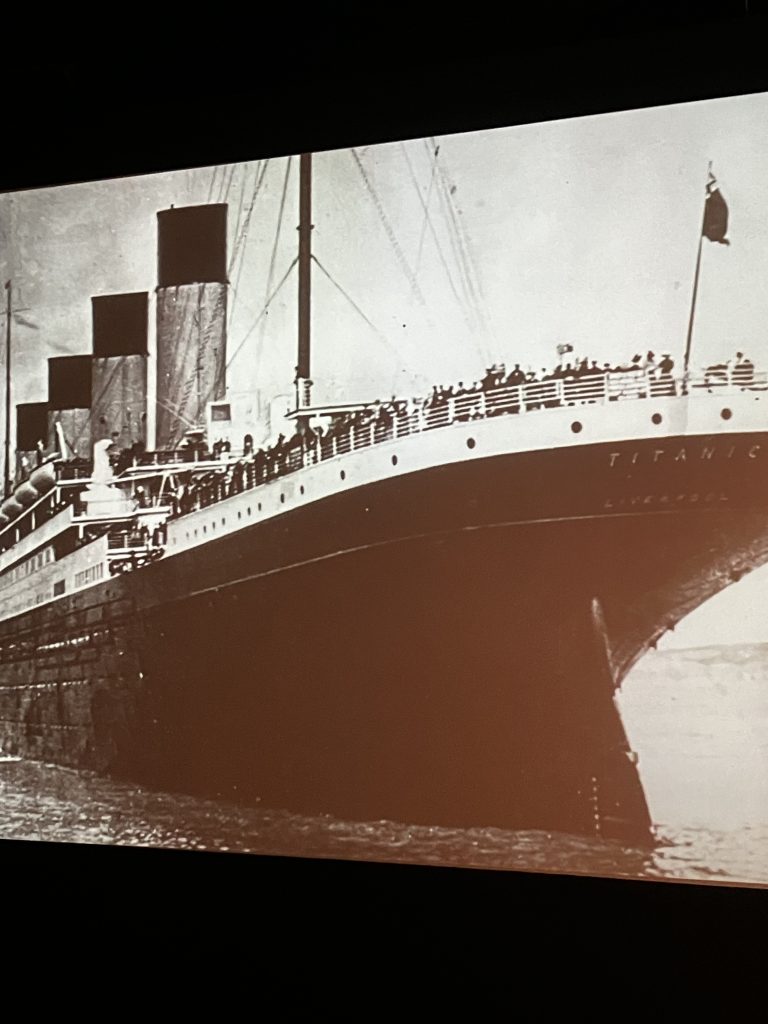
However, I’m not unreasonable. Once they actually got around to looking at the actual voyage, it was good.
They had a recording of actual survivors talking about their memories. One woman remembers walking along the deck with the actual ice shavings from the iceberg at her feet, and playing snowballs, after being assured by a crew member that there was absolutely nothing to fear.
I enjoyed that part very much.
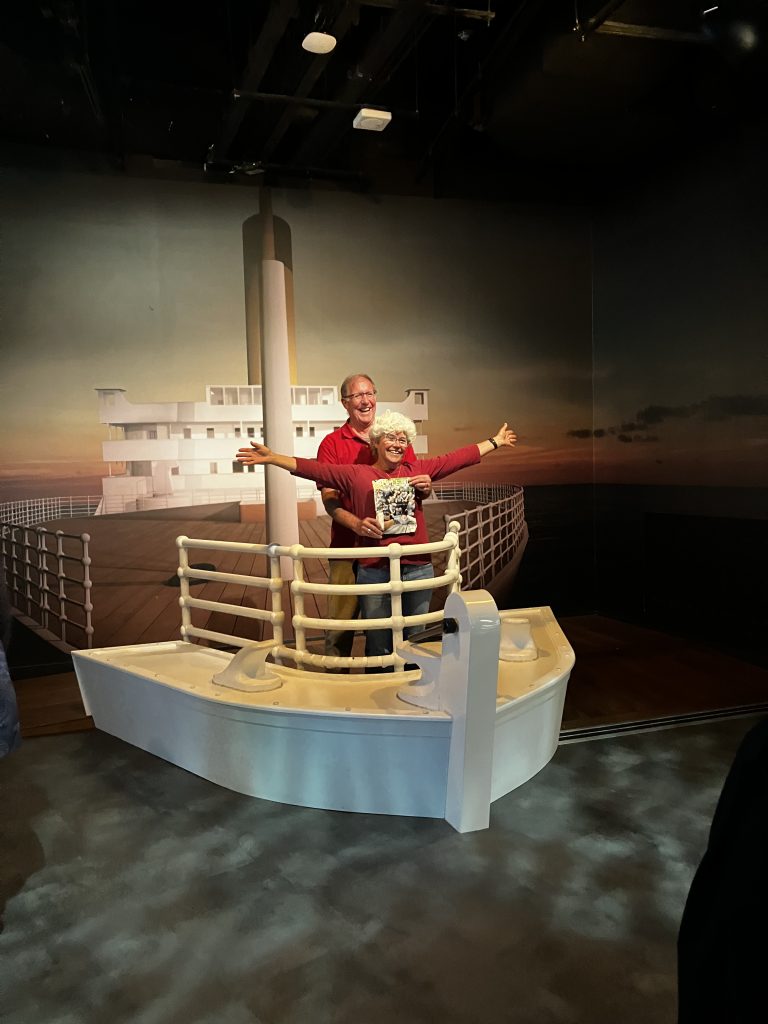
Just before you hit the enormous gift shop, you could pose for a photo.
But look at what I saw back at the hotel. A girl got into the lift looking like she was straight out of the 80’s.
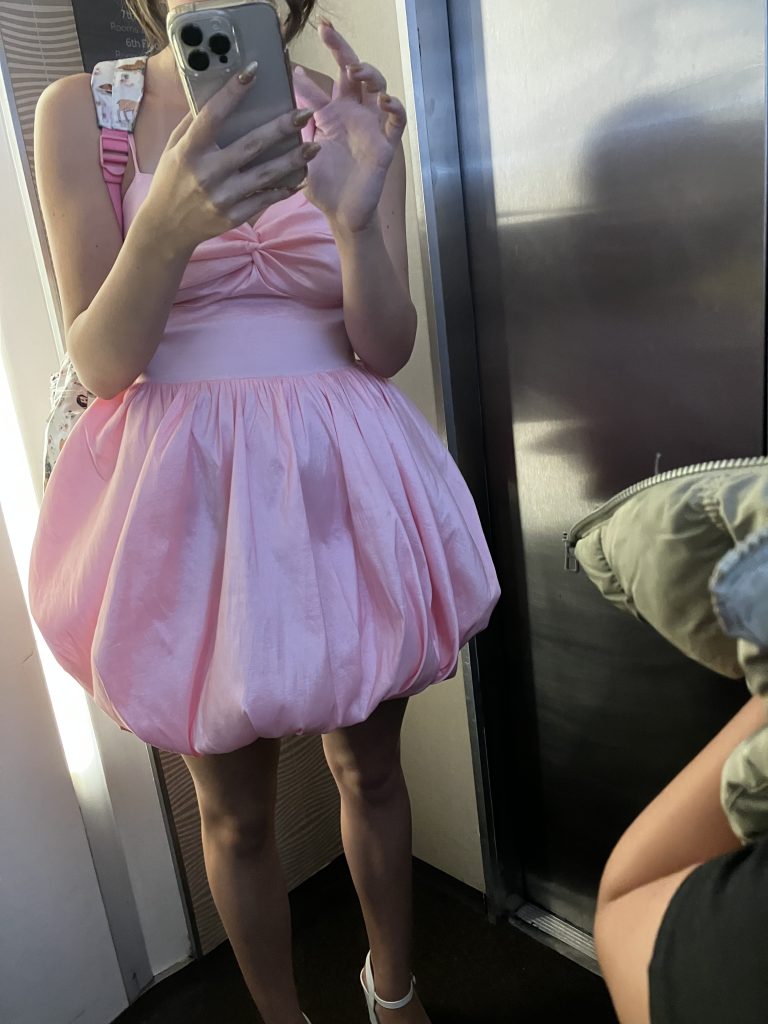
It’s amazing the sights you see when you travel.
Leave a Reply